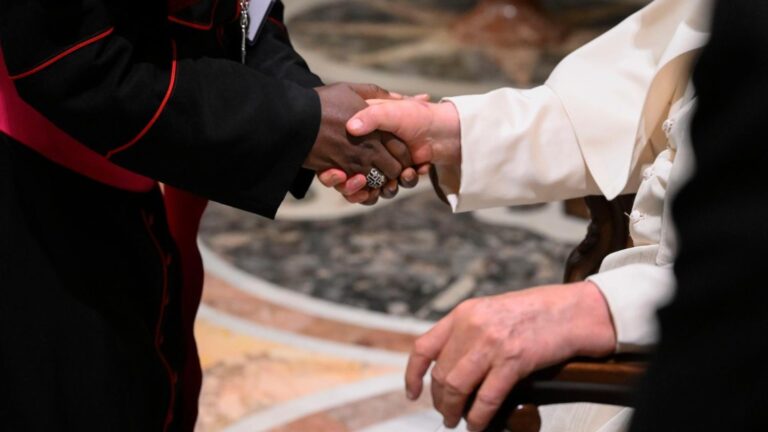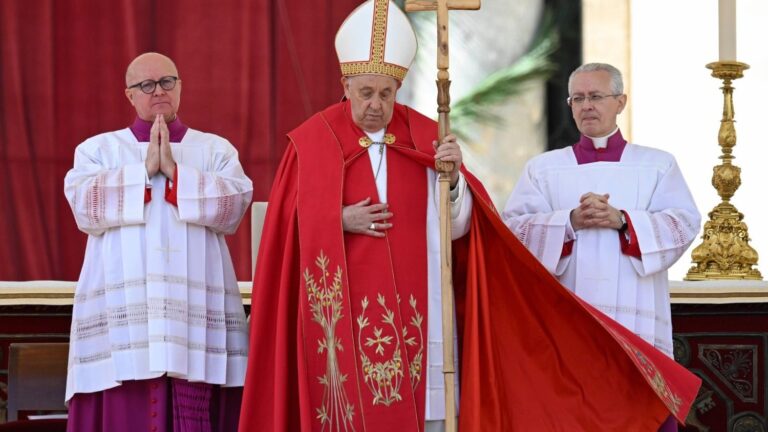Vatican approves devotion to Our Lady of Sorrows of Chandavila, Spain
The Dicastery for the Doctrine of the Faith gives its consent to the “nihil obstat” proposed by the Archbishop of Mérida-Badajoz regarding the devotion to Our Lady of Sorrows at the sanctuary of Chandavila, in Spain, when two young girls allegedly had spiritual visions towards the end of World War II.
By Vatican News
The Dicastery for the Doctrine of the Faith “willingly gives its consent” for Msgr. José Rodríguez Carballo, Archbishop of Mérida-Badajoz, to proceed with the declaration of the project “no objectionso that “the sanctuary of Chandavila, heir to a rich history of simplicity, of few words and yet of much devotion, can continue to offer to the faithful who wish to approach it, a place of inner peace, consolation and conversion.”
The prefect of the dicastery, Cardinal Victor Manuel Fernandez, expressed this in a letter which Pope Francis had approved on August 22.
The letter follows a July 28 letter from the Spanish archbishop regarding events in 1945 in which two young girls allegedly saw the Virgin Mary in the guise of Our Lady of Sorrows in the Spanish town of Chandavila, in Extremadura, near the Portuguese border.
According to the guidelines published by the Dicastery for the Doctrine of the Faith on May 17, the “no objection“recognizes many signs of an action of the Holy Spirit”, even if “no certainty is expressed on the supernatural authenticity of the phenomenon”.
This approach encourages the diocesan bishop to appreciate the pastoral value and to promote the dissemination of this spiritual proposal, including through possible pilgrimages to a sacred place, while the faithful are authorized to “adhere to it prudently.”
The story of Marcelina and Afra
Devotion to Our Lady of Sorrows in Chandavila began towards the end of World War II with the spiritual experiences of two girls, Marcelina Barroso Expósito, ten years old, and Afra Brígido Blanco, seventeen years old, who separately experienced these events in the same place starting in May 1945.
“Marcelina,” wrote Cardinal Fernández, “recounts that at first she saw a dark shape in the sky. At other times, it appeared more clearly to her that this shape was the Virgin of Sorrows, with a black mantle full of stars, on a chestnut tree. More than the vision itself, this young girl had the profound experience of feeling the embrace and kiss that the Virgin gave her on the forehead. This assurance of the close and affectionate presence of Our Lady, the cardinal noted, is perhaps the most beautiful message.”
“Although, over the days, she and Afra have identified the figure of the Virgin of Sorrows, what stands out most is the presence of the Virgin who brings consolation, encouragement and confidence. When the Virgin asks Marcelina to walk on her knees on an expanse of dry chestnut trees, thorns and sharp stones, she does not do it to make her suffer. On the contrary, she asks her to trust in the face of this challenge: “Do not be afraid, nothing will happen to you.”
Tenderness of Mary
“This call from the Virgin to trust in her love,” continued the Cardinal Prefect, “gave this poor suffering girl hope and also the experience of feeling worthy. This simple cloak, made of reeds and grass with which Our Lady protected the young girl’s knees, is it not a beautiful expression of Mary’s tenderness?”
“At the same time,” he added, “it was an experience of beauty because the Virgin appeared surrounded by luminous constellations, like those that could be admired at night in the clear sky of the small villages of Extremadura, in Spain.”
Discreet lives in service
After the alleged visions, Cardinal Fernandez said, the two girls led “a discreet and discreet life,” dedicating themselves to “works of charity, especially caring for the sick, the elderly and orphans, thus transmitting to those who suffer the sweet consolation of the Virgin’s love that they had experienced.”
Many aspects indicate the action of the Holy Spirit
For all these reasons, Cardinal Fernandez wrote to Archbishop Rodríguez Carballo: “There is nothing to criticize in this beautiful devotion, which presents the same simplicity that we can see in Mary of Nazareth, our Holy Mother. Many positive aspects indicate an action of the Holy Spirit in so many pilgrims who come, both from Spain and Portugal, in conversions, healings and other precious signs in this place.”
The cardinal finally recalled the Jubilee of 2020 which took place on the occasion of the 75th anniversary of the spiritual experiences that took place in Chandavila, a jubilee year recognized by the Archbishop of Mérida-Badajoz at the time “as a blessing for the diocese.”
We can read the full letter from the Prefect in French on the website of the Dicastery for the Doctrine of the Faith.






